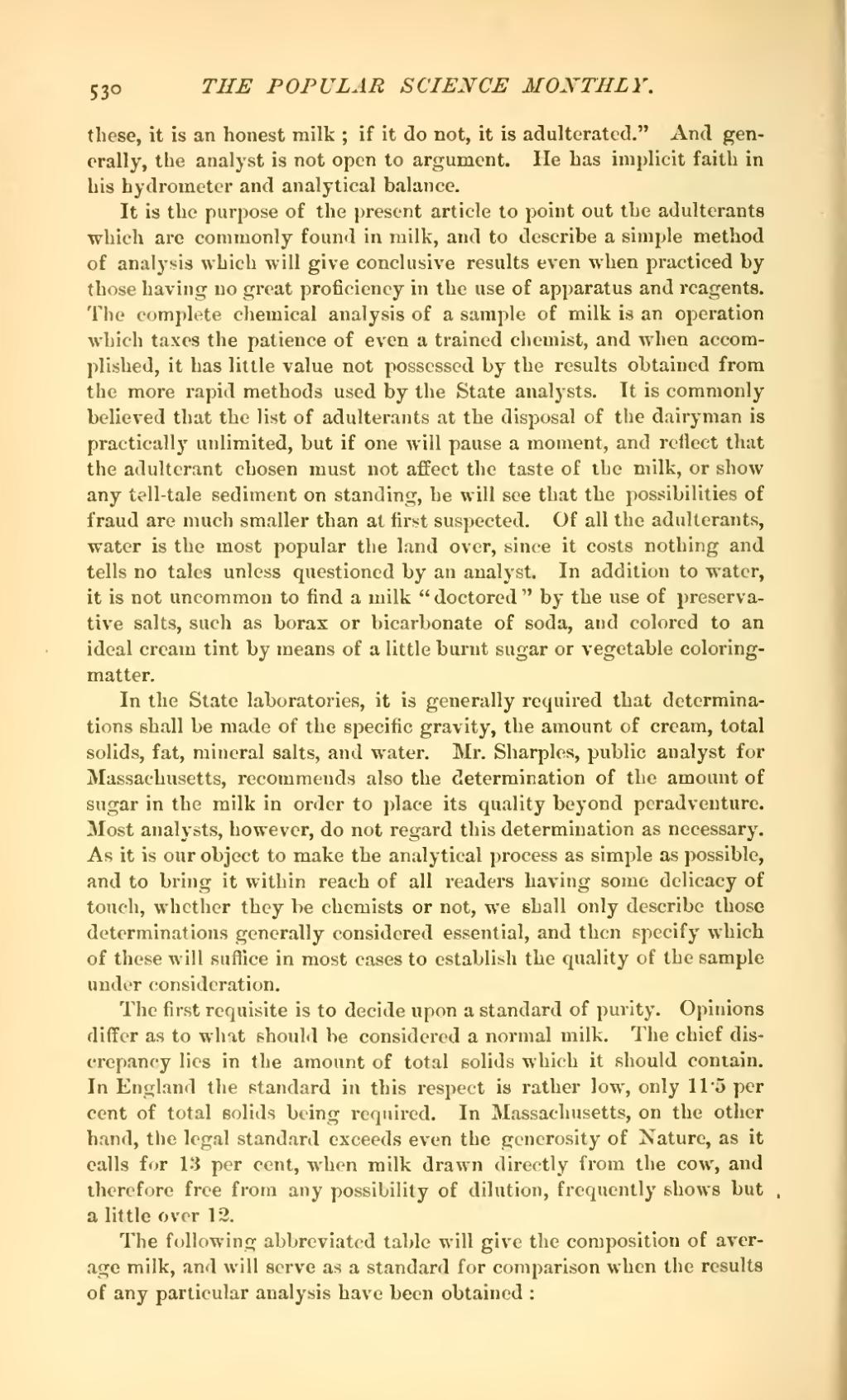these, it is an honest milk; if it do not, it is adulterated." And generally, the analyst is not open to argument. He has implicit faith in his hydrometer and analytical balance.
It is the purpose of the present article to point out the adulterants which are commonly found in milk, and to describe a simple method of analysis which will give conclusive results even when practiced by those having no great proficiency in the use of apparatus and reagents. The complete chemical analysis of a sample of milk is an operation which taxes the patience of even a trained chemist, and when accomplished, it has little value not possessed by the results obtained from the more rapid methods used by the State analysts. It is commonly believed that the list of adulterants at the disposal of the dairyman is practically unlimited, but if one will pause a moment, and reflect that the adulterant chosen must not affect the taste of the milk, or show any tell-tale sediment on standing, he will see that the possibilities of fraud are much smaller than at first suspected. Of all the adulterants, water is the most popular the land over, since it costs nothing and tells no tales unless questioned by an analyst. In addition to water, it is not uncommon to find a milk "doctored" by the use of preservative salts, such as borax or bicarbonate of soda, and colored to an ideal cream tint by means of a little burnt sugar or vegetable coloring-matter.
In the State laboratories, it is generally required that determinations shall be made of the specific gravity, the amount of cream, total solids, fat, mineral salts, and water. Mr. Sharpies, public analyst for Massachusetts, recommends also the determination of the amount of sugar in the milk in order to place its quality beyond peradventure. Most analysts, however, do not regard this determination as necessary. As it is our object to make the analytical process as simple as possible, and to bring it within reach of all readers having some delicacy of touch, whether they be chemists or not, we shall only describe those determinations generally considered essential, and then specify which of these will suffice in most cases to establish the quality of the sample under consideration.
The first requisite is to decide upon a standard of purity. Opinions differ as to what should be considered a normal milk. The chief discrepancy lies in the amount of total solids which it should contain. In England the standard in this respect is rather low, only 11·5 per cent of total solids being required. In Massachusetts, on the other hand, the legal standard exceeds even the generosity of Kature, as it calls for 13 per cent, when milk drawn directly from the cow, and therefore free from any possibility of dilution, frequently shows but a little over 12.
The following abbreviated table will give the composition of average milk, and will serve as a standard for comparison when the results of any particular analysis have been obtained:

